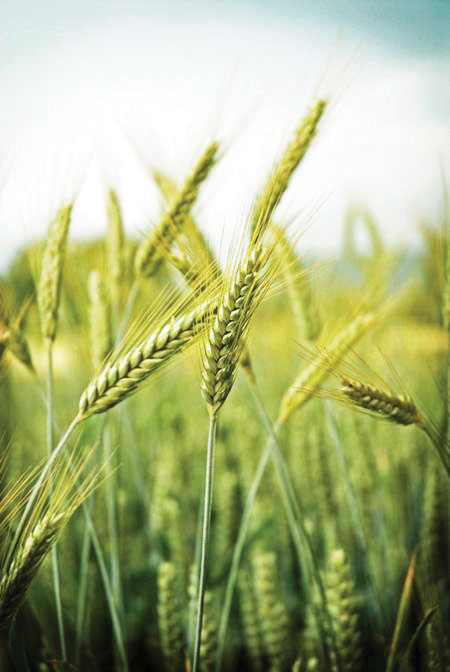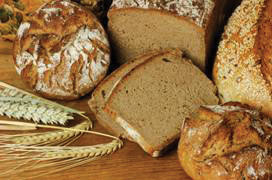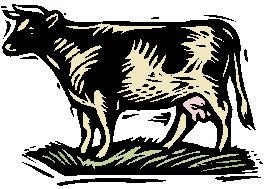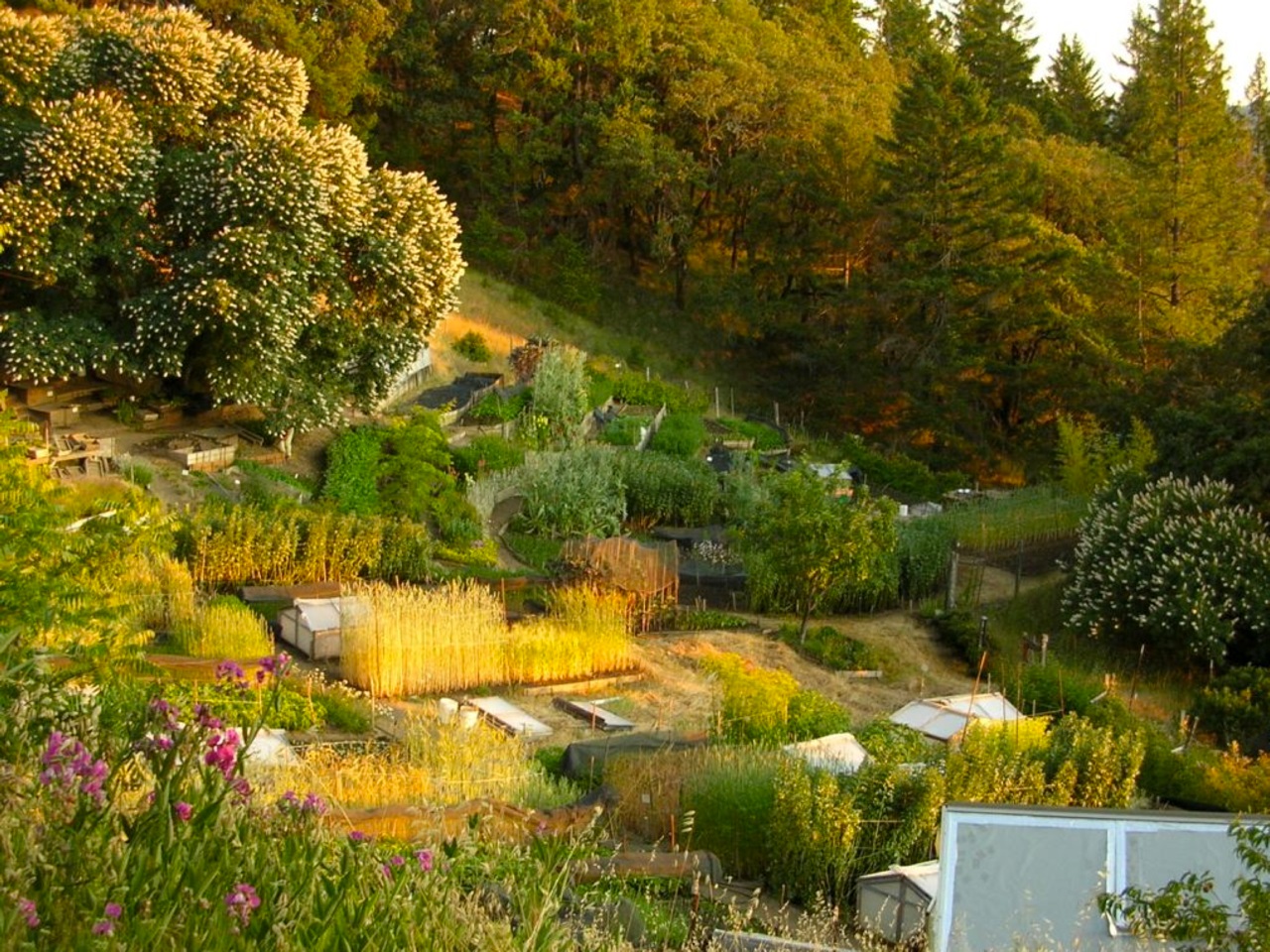FAQ: Why Should I Try Growing a
Complete Diet?
Answer: Thanks for the good question! When we at Ecology Action began our work back in the 1970s, most people weren’t ready to launch into the idea of growing a complete diet, and didn't even consider growing grains on a small scale to be possible. This was because at the time, grains were cheap to purchase and people felt it took too much time to incorporate this element into their gardening. Times changed, however, and in 2008, the price of wheat tripled. Our international mail order catalog, Bountiful Gardens (no longer available), was inundated with orders for grain seed; the price of commercial grain products, coupled with the decrease in the availability of imported grain, had people worried that they would not be able to continue to get the grains they wanted. Fast forward to 2024, with the global economy still reeling from the pandemic years, supply chain challenges, and lots of inflation, and...well, people are even more interested than ever in growing their own food security. What is causing the changes? The rising prices and lack of availability of staple crops are due in part to the fact that the local farming knowledge-base is being lost, and the U.S. and other countries are outsourcing more and more of their agricultural production. In the case of the U.S., the number of farmers has dropped to less than two-tenths of one percent of the population. This is happening, in part, because farm production expenses and working debt are increasing, while farm income has stayed relatively flat. And we're losing small farms and seeing a decline in the quality of farmland, too, according to the The Guardian: "Record numbers of US farms are going out of business with small farms and Black farmers the hardest hit— again, according to the 2022 agriculture census, a comprehensive snapshot of the state of America’s farms and farmers published every five years by the Department of Agriculture (USDA). Yet industrial factory farms rearing thousands of livestock in confinement have further expanded into rural America, acquiring smaller farms, raking in taxpayer subsidies and generating environmental harms." (theguardian.com/environment/2024/ feb/15/us-agriculture-census-farming) The problem is, if major food producing countries like the U.S. are passing off the responsibility for their food security to mega-producers and to other countries, and we are all in the same boat as far as dwindling availability of fertile, farmable land and skilled farmers, who is going to be able to pick up the slack? The U.S. isn't alone in losing its farming population— the demographics of the world are also changing: the UN projects that by 2050, 68% of the world population will live in urban areas, with a lot of that transition taking place in China, India, and Nigeria. This poses two challenges: 1) farming literacy worldwide is being lost; and 2) more people are moving into the consumer position with fewer providers.
So, with all of this in mind, consider that dedicating three 100ft2 beds to grains could provide you with a 1 lb loaf of bread each week for a year. With an additional three 100ft2 of hull-less oats you could enjoy 2 large bowls of oatmeal for every week of the year. If the 8 hours a day it would take one person to produce a complete annual diet for a family of four seems daunting, then consider starting small, with the objective of growing 25% of your own grains and vegetables. Sometimes the perceived obstacles of a large project resolve themselves once you begin, and when you experience the wonderful benefits that result from improved health, vitality, and a sense of empowerment as you create your own food security, you'll see it's worth the effort. The important thing to remember when growing a complete diet is that the "60:30:10 ratio" is the key to having a sustainable, regenerative system that requires few (potentially zero) external inputs, and will keep producing year after year. What this means is that if you scale back your grains to 25% of your annual diet, then proportionally scale back the 30% and 10% crops as well. For more clarification on what these ratios mean, and how to use them in your garden, see page 39 of How to Grow More Vegetables, 9th ed. I also recommend Self-Teaching Mini-Series Booklets 33:Grow Your Own Grains and #38:A Path to Peace and Sustainability: Growing Soil, Food and Seed in As Little As 1,000 Sq. Ft. as good resources for getting started in this process. Sustainability is the key to a successful GB mini-farm. Because we are working with such a very small space (as little as 2,000ft2 for a complete diet for one person working with good soil and gardening skill), we have to consider how to move away from depletion and toward regeneration and resilience in every aspect of a mini-farm. There is a tendency for people to want to "balance the equation" by importing nutrients for replenishing soil from external sources like seaweed and animal or human waste. The challenge is that there is barely enough seaweed to meet the current demand, and increasing extraction of a resource only tips the imbalances in another direction. As for human waste, most is not captured in a way that can be safely used, and is mixed with industrial wastes and other toxic waste products, making it unsuitable as a soil amendment. For more information on the potential for the safe, legal use of human waste see Future Fertility: Transforming Human Waste into Human Wealth by John Beeby.
Small is beautiful—and productive! The bottom line is: there are many reasons to try growing a complete diet, and spring is a great time to start, but you don't need to jump in at the deep end! Begin by growing your food at the level that feels manageable. While it's definitely empowering to grow a complete diet, it's better to start small and adhere to the principles that will sustain you and your soil, so you experience both the abundance you can produce with relatively little effort, and the joy that results when we become life-givers. You, and your garden, can grow over time. And remember, just because you're working on a small scale, it doesn't mean you can't have impressive results! A small-farming success story I enjoy is that of Russian farmers, where in 1998, 3% of farmable land was in dachas (kitchen gardens) attached to country homes. The remaining 97% of farmable land was in large-scale, commercial operations. Phenomenally, because of the level of personal involvement farmers put into the dachas with various forms of intensive gardening and mix-cropping used, the production from these small farms—only 3% of the land—ended up almost equaling yields from all the land under large-scale production in that country. What is exciting is that, in the process of getting directly involved in healing the soil and growing our food in our own back-yard or community gardens, we re-engage a part of our spirit that has historically been linked with nature, and establish a communication with a larger energy system that can easily help us to understand what is needed to turn the tides of scarcity to abundance. To nurture the Earth and each other while working side by side makes any task more joyous, and in the process of creating sustainability in our lives, we begin to heal that place in ourselves that may have felt separate, alone, and disadvantaged. GROW BIOINTENSIVE grows healthy soil, which grows healthy food, which grows healthy people...and a healthy ecosystem for us all!
♥ top | Newsletter Home |Table of Contents| Archive
|


 Question: Why should I grow
a complete GB diet,
(and how much time will it
take?)?
Question: Why should I grow
a complete GB diet,
(and how much time will it
take?)?
 What can we do about this?
What can we do about this?  While initially it's possible to make use of animal
manure that is already available, it is not optimal to
depend on it, because a) it can cause salt buildup
in your soil, and b) it is ultimately a part of the
depletion problem, not a part of the solution. This
second point is due to the fact that to feed one cow,
you would have to grow an acre of fodder each year.
The fodder itself contains 1 giga-unit of carbon. Once
it goes through the cow, the resulting manure only
contains 2/3 of that
giga-unit of carbon,
and once the manure
is cured, it contains
only 1/3 that giga-unit
of carbon. The cause
of this carbon loss
is the fact that both the metabolism of the cow and the microorganisms
in the manure release the carbon as CO2 into the
atmosphere, and so the carbon isn’t getting into the
soil where it is most needed, and it is contributing
to global warming. In addition to the carbon
problem, as it grew, the fodder for the cow took up
minerals from the soil that are now tied up in the
cow’s bones, tissues, milk, and meat, so many of
the minerals don’t get back to the soil either. (For
more about Biointensive gardening and livestock
While initially it's possible to make use of animal
manure that is already available, it is not optimal to
depend on it, because a) it can cause salt buildup
in your soil, and b) it is ultimately a part of the
depletion problem, not a part of the solution. This
second point is due to the fact that to feed one cow,
you would have to grow an acre of fodder each year.
The fodder itself contains 1 giga-unit of carbon. Once
it goes through the cow, the resulting manure only
contains 2/3 of that
giga-unit of carbon,
and once the manure
is cured, it contains
only 1/3 that giga-unit
of carbon. The cause
of this carbon loss
is the fact that both the metabolism of the cow and the microorganisms
in the manure release the carbon as CO2 into the
atmosphere, and so the carbon isn’t getting into the
soil where it is most needed, and it is contributing
to global warming. In addition to the carbon
problem, as it grew, the fodder for the cow took up
minerals from the soil that are now tied up in the
cow’s bones, tissues, milk, and meat, so many of
the minerals don’t get back to the soil either. (For
more about Biointensive gardening and livestock 
